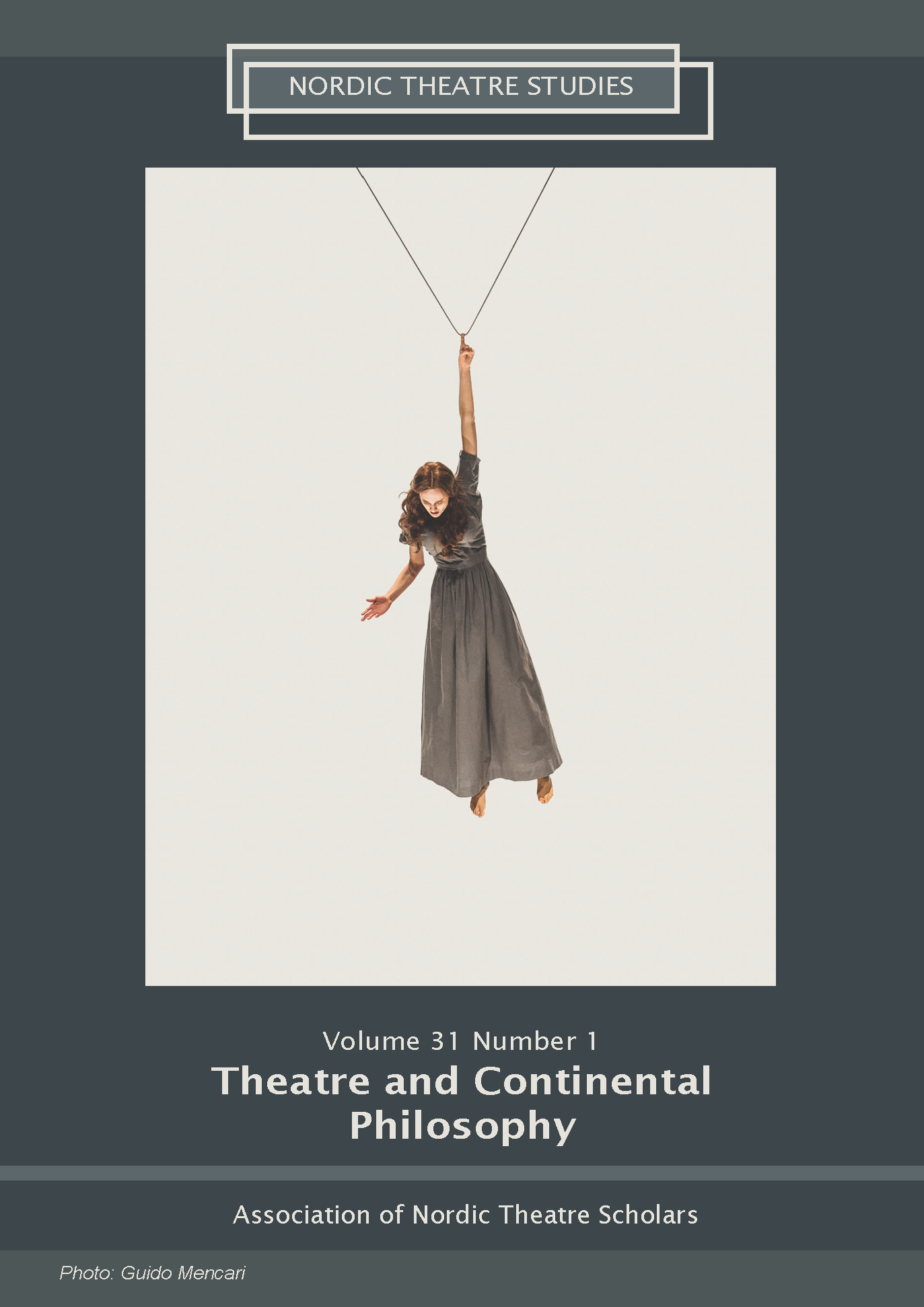A Literary (Techno)science
The Silent Speech of Erkki Kurenniemi’s 2048 Performance
DOI:
https://doi.org/10.7146/nts.v31i1.113001Keywords:
Aesthetics, Archive, Finland, Erkki Kurenniemi, Literary, Performance, Philosophy, Jacques Rancière, TechnoscienceAbstract
Beginning in the late 1970s, Finland’s Erkki Kurenniemi (1941-2017) actively labored to archive every possible aspect of his life. He took photos, made videos, and collected his tram tickets, receipts, body hairs, etc. Kurenniemi believed that within the next forty years, computer technoscience will have advanced sufficiently that it could be programmed to interpret the data of his archive and—on his 107th birthday, 10 July 2018—resurrect his consciousness. For Kurenniemi, this project was an experiment in the realms of neuroscience and artificial intelligence. However, it can also be seen as an experiment in aesthetics, or in what Jacques Rancière calls the “aesthetic regime” of art—an aesthetic-political historical framework imbued with the dynamics of democracy, where “everything speaks.” This article reframes Kurenniemi’s work within the aesthetic regime of art to draw attention to the “silent speech” and “aesthetic
unconscious” (Rancière) of the work and what is the literary nature of Kurenniemi’s experiments with (techno)science.
References
Broderick, Damien. 2013. “Trans and Post.” Max More and Natasha Vita-More (eds.). The Transhumanist Reader: Classical and Contemporary Essays on the Science, Technology, and
Philosophy of the Human Future. Malden, MA: Wiley-Blackwell, 430-37.
Constant. n.d. “Erkki Kurenniemi (In 2048): (preliminary work towards) an online archive.” kurenniemi.activearchives.org/logbook/ (28.04.2018).
Constant. 2016. “Constant (Micheal Murtaugh, Nicolas Malevé).” Transmediale. https:// transmediale.de/de/content/constant-michael-murtaugh-nicolas-malev (28.04.2018).
Cox, Geoff, Nicolas Malevé, and Michael Murtaugh. 2015. “Archiving the Databody: Human and Nonhuman Agency in the Documents of Erkki Kurenniemi.” In Krysa and Parikka 2015, 125-41.
Cubitt, Sean and Paul Thomas (eds). 2013. Relive: Media Art Histories. Cambridge, MA: MIT Press.
Derrida, Jacques. 1995. Archive Fever: A Freudian Impression. Translated by Eric Prenowitz. Chicago, IL: University of Chicago Press.
Ernst, Wolfgang. 2015. “I-Kurenniemics: Becoming Archive in Electronic Devices.” In Krysa and Parikka 2015, 203-12.
The Future is Not What It Used to Be. Director and Script: Mika Taanila. Camera: Jussi Eerola. 2002. On Aika & aine ‘Time & Matter.’ Kinotar.
Harley, Ross. 2013. “Australian Video Art Histories: A Media Arts Archaeology for the Future.” In Cubitt and Thomas 2013, 221-231.
Hauser, Jens. “Remediating Still Life, Pencils of Nature, and Fingerprints: Transhistorical Perspectives on Biotechnological Art.” In Cubitt and Thomas 2013, 275-307.
James, David E. 1992. “Film Diary/Diary Film: Practice and Product in Walden.” In David E. James (ed.). To Free the Cinema: Jonas Mekas & The New York Underground. Princeton, NJ: Princeton University Press, 145-79.
Krysa, Joasia and Jussi Parikka (eds.). 2015. Writing and Unwriting (Media) Art History: Erkki Kurenniemi in 2048. Cambridge, MA: MIT Press.
Kuisma, Oiva. 2006. The History of Finnish Aesthetics from the Late 18th Century to the Early 20th Century. Vammala, FI: Vammalan Kirjapaino.
Kurenniemi, Erkki. 1968. “Antropoidien tanssi.” YouTube. https://www.youtube.com/watch?v=ktPopMt6Zh0 (28.04.2018).
Kurenniemi, Erkki. 1971. “Message is Massage.” In Krysa and Par ikka 2015, 91-95.
Kurenniemi, Erkki. 1972-82. “Computer Eats Art.” Translated by Teo Välimäki. In Krysa and Parikka 2015, 97-105.
Kurenniemi, Erkki. ca. 1986. “Computer-Integrated Art.” In Krysa and Parikka 2015, 107-11.
Kurenniemi, Erkki. 1999-2000. “Supermegatechnologies: Some Thoughts on the Future.” In Krysa and Parikka 2015, 159-71.
Larsen, Lars Bang. 2015. “The Unbearable Non-Artist from ‘L’Homme machine’ to Algorithmic Afterlife: Non-Cartesian Cybernetics and Aesthetic Embodiment in Erkki Kurenniemi.” In Krysa and Parikka 2015, 113-23.
Latour, Bruno. 1987. Science in Action: How to Follow Scientists and Engineers Through Society. Cambridge, Mass.: Harvard UP.
Mellais, Maritta (ed.). 2013. Erkki Kurenniemi: A Man from the Future. Helsinki: Finnish National Gallery.
Paasonen, Susanna. 2015. “Fleshly Intensities.” In Krysa and Parikka 2015, 29-39.
Rancière, Jacques. 2004. The Politics of Aesthetics: The Distributions of the Sensible. Translated by Gabriel Rockhill. New York City: Continuum.
Rancière, Jacques. 2009a. Aesthetics and Its Discontents. Translated by Steven Corcoran. Cambridge, UK: Polity.
Rancière, Jacques. 2009b. The Aesthetic Unconscious. Translated by Debra Keates and James Swenson. Cambridge, UK: Polity.
Siukonen, Jyrki. 2013. “Dead Computers Tell No Tales: Remarks on the Futures Behind Kurenniemi’s 2048 Resurrection.” In Mellais 2013, 57-73.
Stelarc. 2013. “The Cadaver, the Comatose, and the Chimera: Avatars Have No Organs.” In Cubitt and Thomas 2013, 325-34.
Taanila, Mika. 2002. “Drifting Golfballs in Monastaries: A Conversation with Erkki Kurenniemi.” Translated by Teo Välimäki. In Krysa and Parikka 2015, 293-305
Downloads
Published
How to Cite
Issue
Section
License
The copyright belongs to the authors and Nordic Theatre Studies. Users can use, reuse and build upon the material published in the journal but only for non-commercial purposes. Users are allowed to link to the files, download the files, distribute the files on a local network (preferably by links), upload the files to local repositories if their institutions require them to do so, but not republish the files without proper agreements with the journal and the author.

